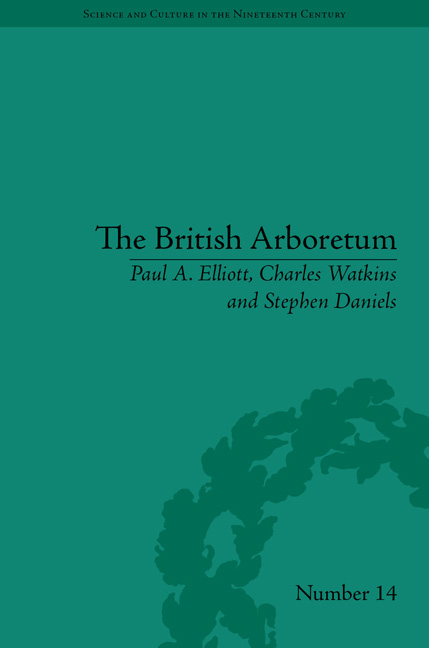Refine search
Actions for selected content:
10306 results in History of science: general interest
Conclusion: The Authority of the Sciences of Life
-
- Book:
- Until Darwin, Science, Human Variety and the Origins of Race
- Published by:
- Pickering & Chatto
- Published online:
- 05 December 2014, pp 149-154
-
- Chapter
- Export citation
4 - Inside Greenwich: The Preparations for 1874
-
- Book:
- The Transit of Venus Enterprise in Victorian Britain
- Published by:
- Pickering & Chatto
- Published online:
- 05 December 2014, pp 57-88
-
- Chapter
- Export citation
Part II - Word and Image
-
- Book:
- Popular Exhibitions, Science and Showmanship, 1840–1910
- Published by:
- Pickering & Chatto
- Published online:
- 05 December 2014, pp -
-
- Chapter
- Export citation
6 - Aestheticizing Electricity: Gendered Cultures Of Domestic Illumination
-
- Book:
- Domesticating Electricity
- Published by:
- Pickering & Chatto
- Published online:
- 05 December 2014, pp 153-196
-
- Chapter
- Export citation
Works Cited
-
- Book:
- Science and Eccentricity
- Published by:
- Pickering & Chatto
- Published online:
- 05 December 2014, pp 215-242
-
- Chapter
- Export citation
3 - British Arboriculture, c. 1800–35
-
- Book:
- The British Arboretum
- Published by:
- Pickering & Chatto
- Published online:
- 05 December 2014, pp 59-82
-
- Chapter
- Export citation
Index
-
- Book:
- The British Arboretum
- Published by:
- Pickering & Chatto
- Published online:
- 05 December 2014, pp 293-298
-
- Chapter
- Export citation

The British Arboretum
- Trees, Science and Culture in the Nineteenth Century
-
- Published by:
- Pickering & Chatto
- Published online:
- 05 December 2014
-
- Book
- Export citation
3 - The Misfortunes of Botany
-
- Book:
- The Aliveness of Plants
- Published by:
- Pickering & Chatto
- Published online:
- 05 December 2014, pp 23-30
-
- Chapter
- Export citation
2 - University education
-
- Book:
- Communities of Science in Nineteenth-Century Ireland
- Published by:
- Pickering & Chatto
- Published online:
- 05 December 2014, pp 43-70
-
- Chapter
- Export citation
Index
-
- Book:
- The Age of Scientific Naturalism
- Published by:
- Pickering & Chatto
- Published online:
- 05 December 2014, pp 247-256
-
- Chapter
- Export citation
3 - Tyndall, Lewes and Popular Representations of Scientific Authority in Victorian Britain
- from Part I - John Tyndall
-
-
- Book:
- The Age of Scientific Naturalism
- Published by:
- Pickering & Chatto
- Published online:
- 05 December 2014, pp 51-70
-
- Chapter
- Export citation
4 - Newtonian Studies and the History of Science 1835–1855
-
- Book:
- Recreating Newton
- Published by:
- Pickering & Chatto
- Published online:
- 05 December 2014, pp 99-128
-
- Chapter
- Export citation
List of Figures
-
- Book:
- Science and Societies in Frankfurt am Main
- Published by:
- Pickering & Chatto
- Published online:
- 05 December 2014, pp xi-xii
-
- Chapter
- Export citation
4 - Natural History and Self Culture
-
- Book:
- Natural History Societies and Civic Culture in Victorian Scotland
- Published by:
- Pickering & Chatto
- Published online:
- 05 December 2014, pp 91-116
-
- Chapter
- Export citation
5 - Organizing Subscriber Science
-
- Book:
- Natural History Societies and Civic Culture in Victorian Scotland
- Published by:
- Pickering & Chatto
- Published online:
- 05 December 2014, pp 117-146
-
- Chapter
- Export citation
Notes
-
- Book:
- Science and Eccentricity
- Published by:
- Pickering & Chatto
- Published online:
- 05 December 2014, pp 179-214
-
- Chapter
- Export citation
Part III - Communicating Science
-
- Book:
- The Age of Scientific Naturalism
- Published by:
- Pickering & Chatto
- Published online:
- 05 December 2014, pp -
-
- Chapter
- Export citation
7 - A Furious Tempest
-
- Book:
- Regionalizing Science
- Published by:
- Pickering & Chatto
- Published online:
- 05 December 2014, pp 149-170
-
- Chapter
- Export citation
5 - David Brewster's Memoirs of Sir Isaac Newton (1855): The ‘Regretful Witness’
-
- Book:
- Recreating Newton
- Published by:
- Pickering & Chatto
- Published online:
- 05 December 2014, pp 129-158
-
- Chapter
- Export citation
